Stink bugs are relatively new to the US. They routinely invade homes seeking shelter whenever the temperature drops at the end of the summer.
Most Stink bugs don’t bite. These bugs can trigger various reactions of an allergic nature when making their way inside of the house. A runny nose is one of those reactions.
There are multiple types of Stink bugs. Most of them live anywhere between 6 and 8 months.
Table of Contents
What Are Stink Bugs
Stink bugs are known as some of the newest brown insects in the US. They have a common shield-shaped body or an oval-shaped body, depending on the species and various (mostly gray or brown) colors.
Stink bugs are part of the wider group of the Hemiptera family.

These bugs are known for releasing a bad smell for defensive purposes.
Stink bugs grow to the size of a thumbnail and they can fly. These bugs keep their wings close to the body when stationary. This leads many to believe they don’t have wings or the ability to fly.
Stink Bug Identification
Stink bugs grow up to 0.4 – 0-.5 inches. They come in different colors such as gray and brown. These bugs are also seen in other bright colors such as yellow or green.
What Do Stink Bugs Look Like

Stink bug anatomy:
- 1: claws
- 2: tarsus
- 3: tibia
- 4: femur
- 8: compound eye
- 9: antenna
- 10: clypeus
- 23: laterotergites (connexivum)
- 25: pronotum
- 26: scutellum
- 27: clavus
- 28: corium
- 29: embolium
- 30: hemelytral membrane.
Stink bugs are generally shield-shaped. They have a small head with antennae that show multiple color markings.
The abdomen is shaped like a shield. It has smoothly rounded shoulders and it tapers towards the rear, similar to a real shield.
The distinctive trait of Stink bugs is seen with alternating dark and bright color markings on the edge of the abdomen.
Further Reading:
Behavior
Most Stink bugs are known for eating plants. They are seen as a major pest on certain crops.
Stink bugs also tend to eat fruit. When present in large numbers, they can damage fruits as well.
A small percentage of Stink bugs are interested in eating insects. Unlike Stink bugs that eat plants and fruits, Stink bugs that eat insects are beneficial as they remove invasive species such as caterpillars from common crops.
Habitat and Distribution
Stink bugs are very common on crops. They’re also seen on small farms and in gardens.
Many types of Stink bugs in the US have been imported. They come from East Asia and countries such as Japan, China, and Korea.
Species of Stink bugs are known to have an invasive tendency in the US. This is why these bugs are constantly monitored as their distribution increases across North America.
Types of Stink Bugs – Identification Guide
The following types of Stink bugs are most common around the world.
1. Brown Marmorated Stink Bug
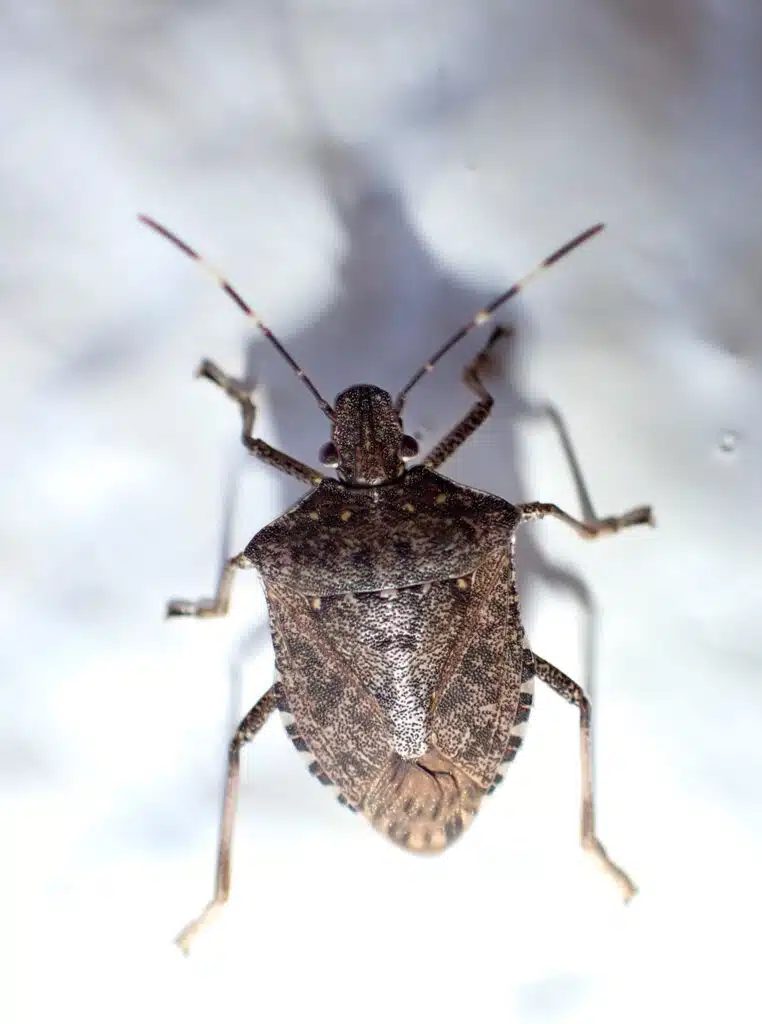
The Brown Marmorated Stink Bug (Halyomorpha Halys) is the most common type of Stink bug in the US. It’s also one of the most common bugs of the genus around the world.
As its name suggests, this bug is mostly recognized by its marked brown coloring. It also comes in other colors on occasion. These colors include red and green.
This species has expanded continuously in the US since 2001. It was first discovered in the North-East. Today, it’s present in most US states, including those on the West Coast.
As its name suggests, this bug is capable of releasing a foul smell. This pungent smell is mostly described as similar to the smell of coriander.
2. Green Stink Bug
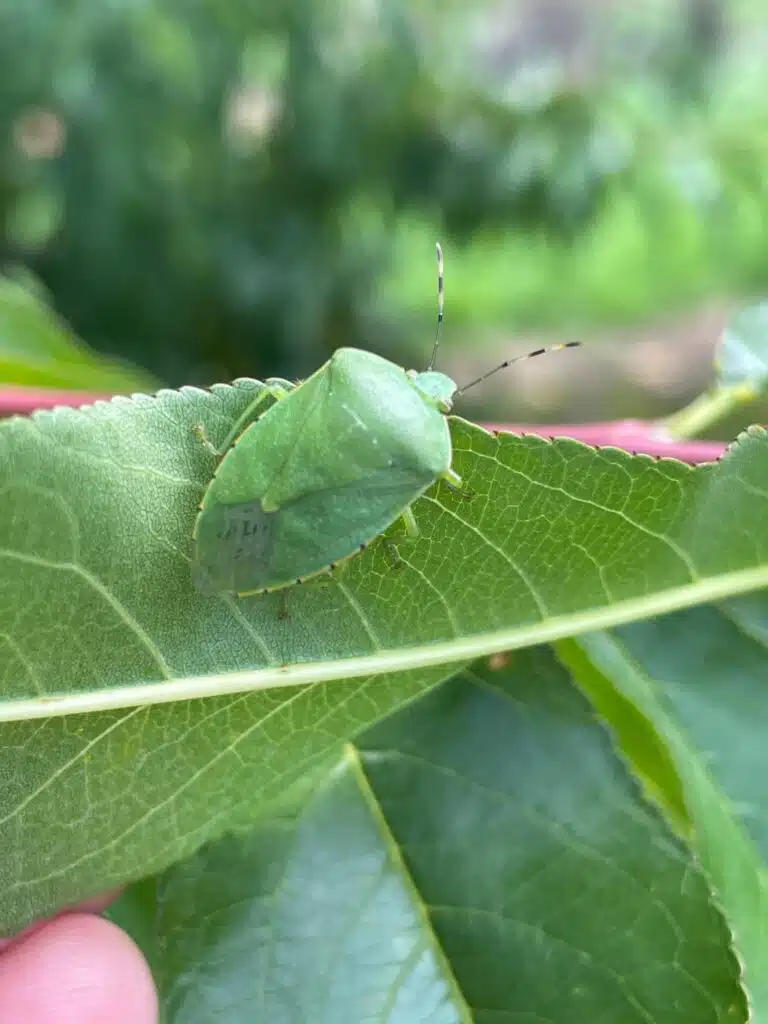
The Green Stink Bug (Chinavia hilaris) is one of the most distinguishable types of Stink bugs. As its name suggests, this species is almost entirely green.
The species is among the first to have landed in the US which means it remains predominant in the Eastern states.
This bug is known for its green body and green head. It has green wings and specific markings on the edge of the abdomen.
The contrasting yellow marks on the edge of its abdomen make it easy to separate from other green stink bugs in the US such as the Southern Stink Bug.
These bugs are problematic to certain fruits. They are only interested in piercing fruits to drink their juices.
3. Harlequin Bug
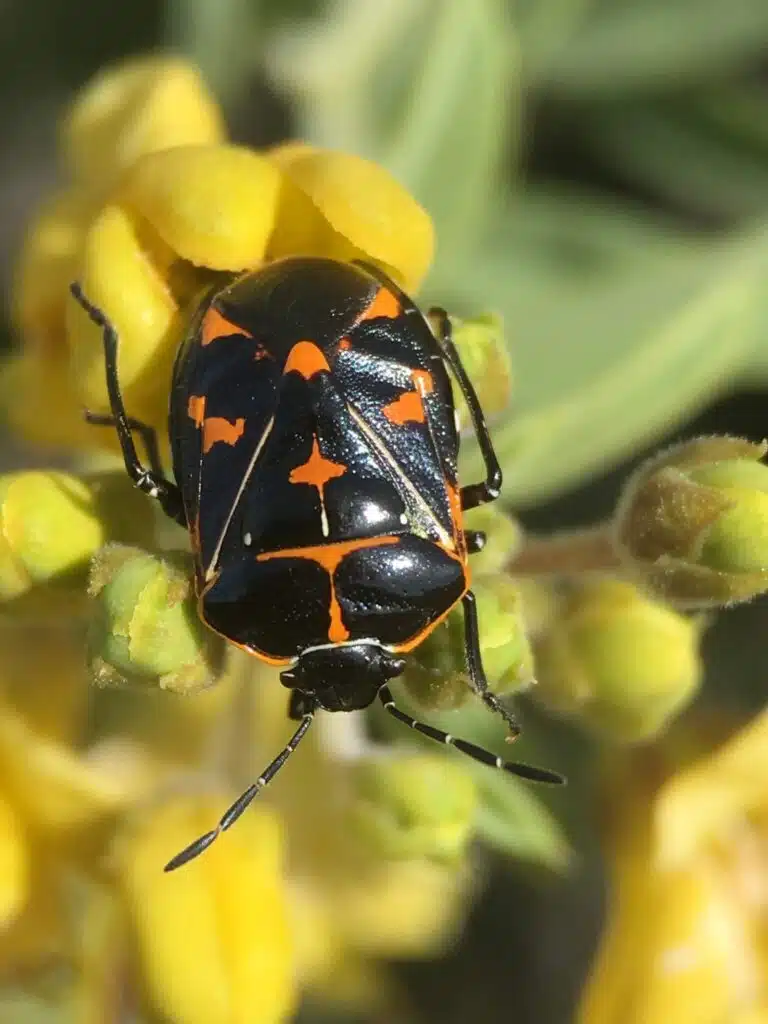
This species (Murgantia histrionica) is known to have a wide distribution in the Southern states. They are known for their orange-black color and shield-like body.
These bugs have a distinct small blackhead.
Most people know these bugs as the potential for crop damage when invading in large numbers.
They damage to cabbage, cauliflower, and Brussel sprouts among others. The damage is irreversible as they drink the juice of these crucifers.
4. Twice-stabbed Stink Bug
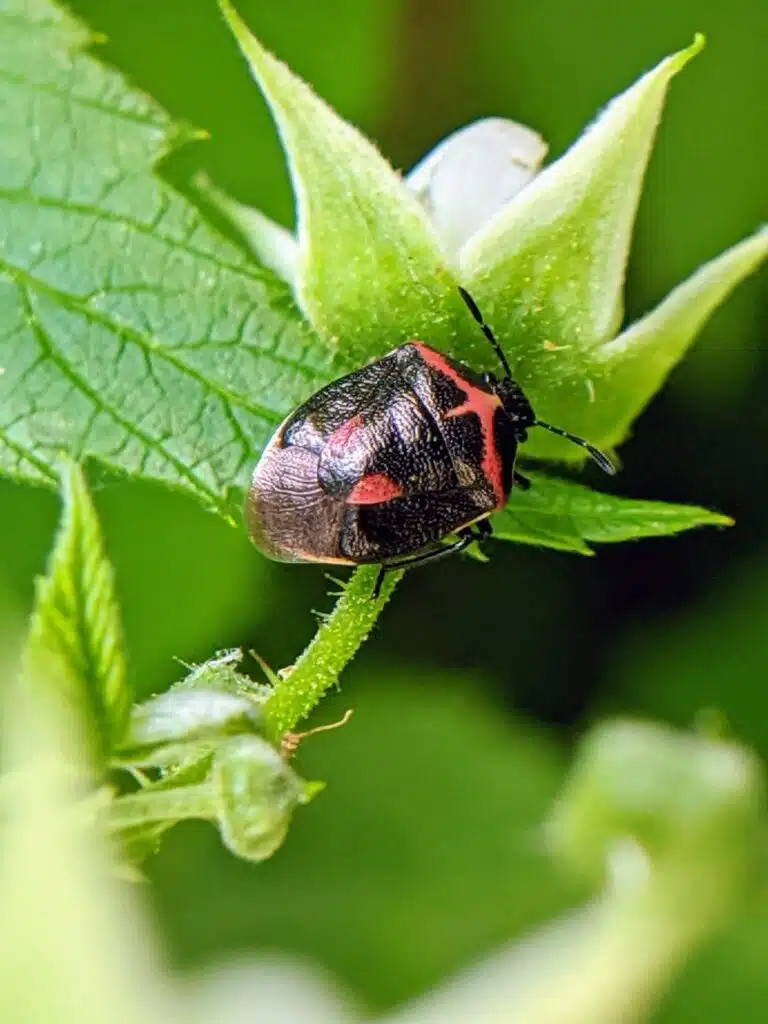
The Twice-stabbed Stink Bug (Cosmopepla lintneriana) is a common genus in the Northern US states. It’s recognized by a black body with orange or red markings. It also has black legs and black antennae.
This small bug is a known pest in various crops. It irreversibly damages milk thistle, asparagus, and oat fields among others.
5. Brown Stink Bug
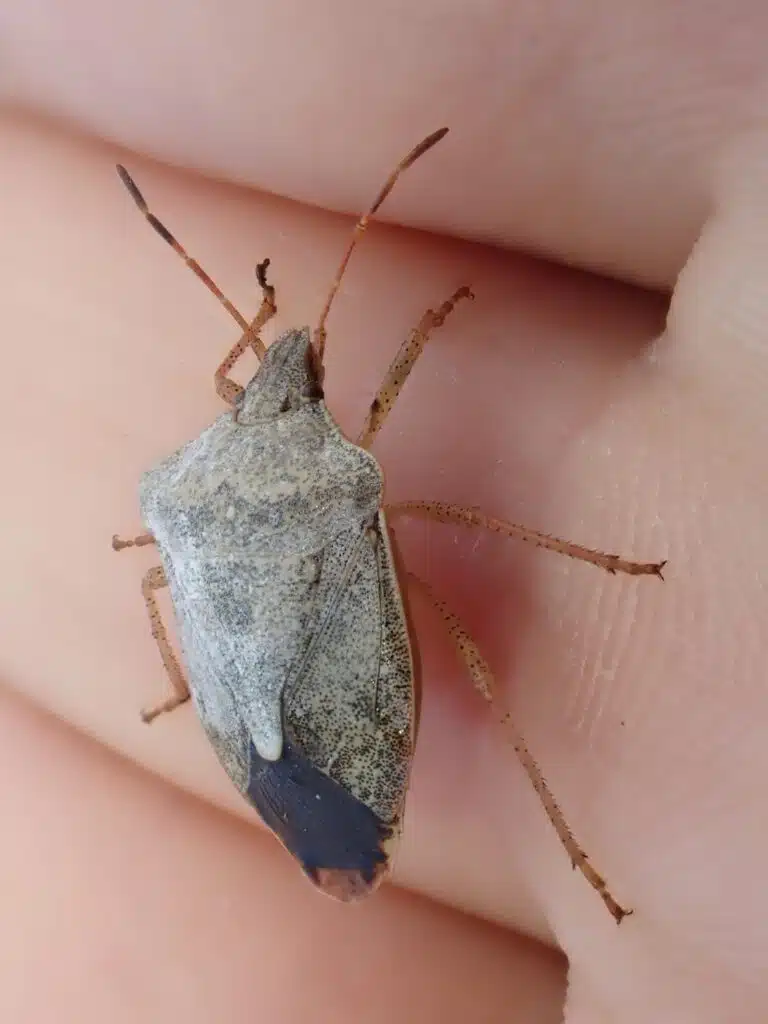
Brown Stink Bugs (Euschistus servus) are common in the South.
These bugs stand out as they have a gray-silver color with brown and white markings.
Like many other Stink bugs in the US, this species is troublesome when present in high numbers around crops or fruits.
They are known to damage many crops which include corn crops that are very common in the US. Soybean and pea crops are also highly damaged by these bugs.
6. Rice Stink Bug
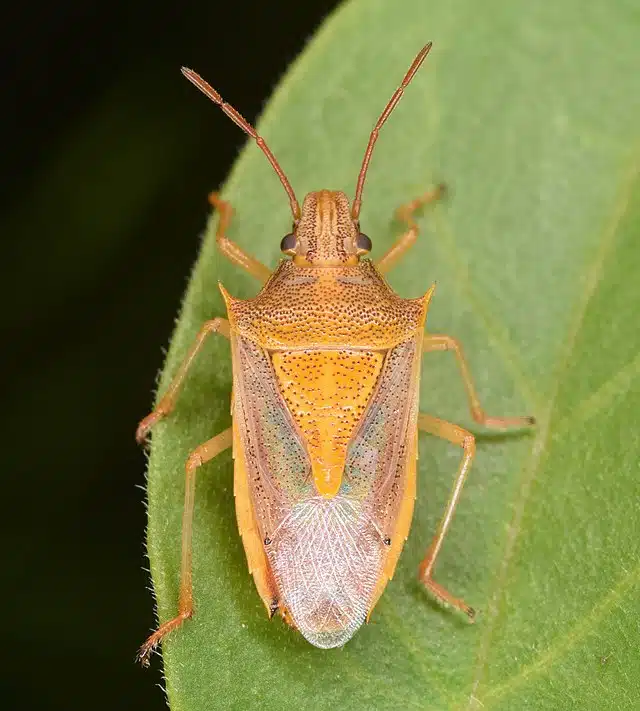
This species of Stink bugs (Oebalus pugnax) has a wide US distribution. It’s found in Northern states and considered a pest in Southern states.
Rice Stink Bugs are among the larger types of Stink bugs as they routinely grow up to 0.5 inches.
They have a shield shape and a yellow-brown body that makes them easy to identify.
While the species lives both in food and in non-food crops, it’s a known pest for cereals.
It damages to rice and wheat crops.
Unlike other species of Stink bugs, the Rice Stink Bug can fly over larger territories in search of rice crops. This is typically done in large groups which makes it a considerable damaging species for crops in states such as Alabama.
7. Juniper Stink Bug
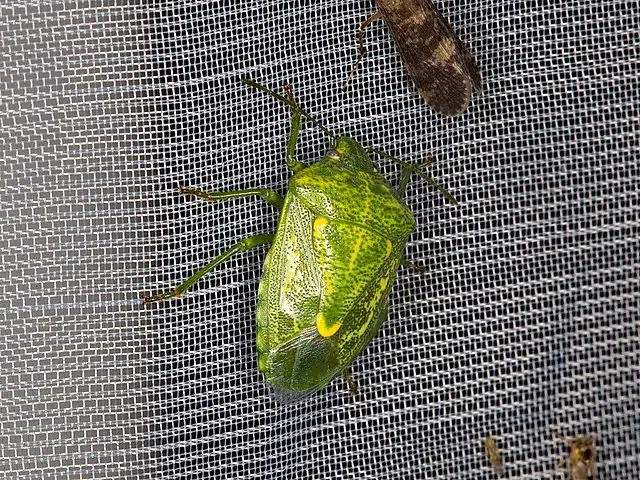
The Juniper Stink Bug (Banasa euchlora) is often compared to green jewels. It has a green body with dark green marks across its wing with a small yellow marking on the abdomen.
The genus gets its name from feeding on a variety of juniper plants. Like most other Stink bugs, the species can also emit odors defensively.
Common in Southern habitats, the bug enters homes to overwinter.
8. Red-shouldered Stink Bug
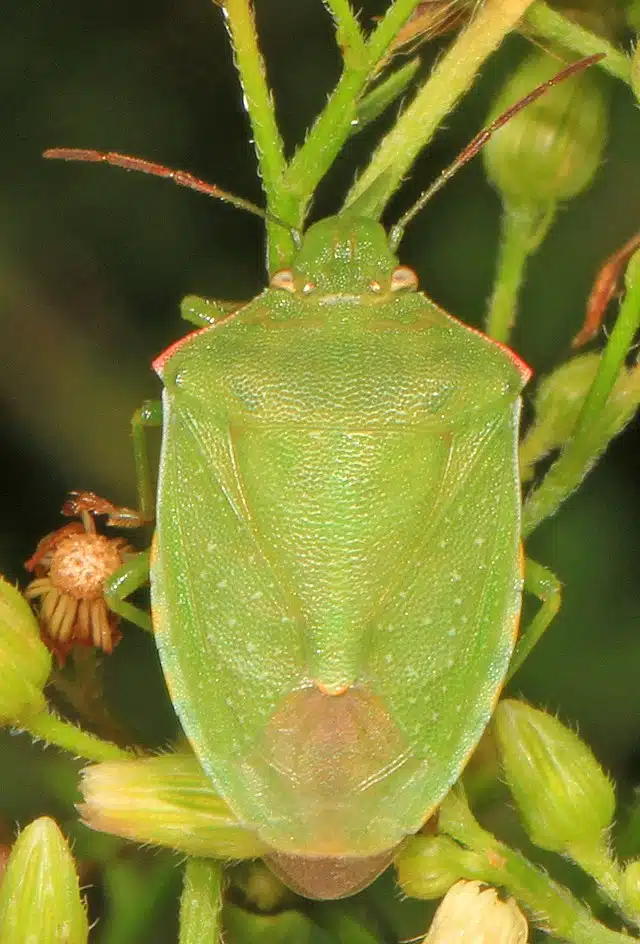
Red-shouldered Stink Bugs (Thyanta custator)are identified by their green shield-like body. These bugs are common in North America.
Growing to a maximum size of 10-11mm, the bug is commonly seen in hemp, wheat, and beans.
This bug gets its name from the red marks on its shoulders and the red marks on the abdomen.
Unlike other bugs of the genus, these aren’t considered major pests as they don’t considerably impact crops.
9. Spined Soldier Bug
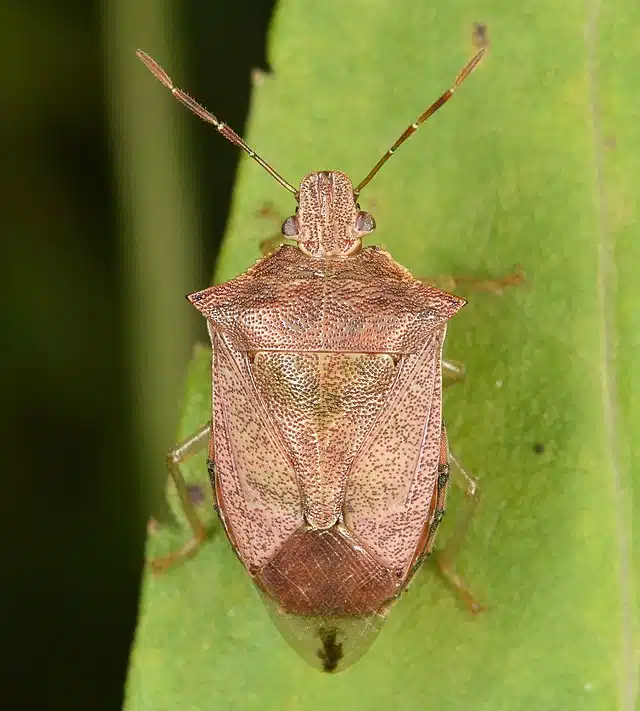
Growing up to 15mm, the Spined Soldier Bug (Podisus maculiventris) has a brown-gray color. Its color changes as it matures.
Nymphs are known for being black, white, and red.
The role of the species is increasing both in the US and around the world.
Spined Soldier Bugs are efficient predators. They are used to control pests on crops across North America and they have been sporadically used with the same purpose elsewhere.
From an early stage, the Spined Soldier Bug is a known predator. It eats over 90 species of insects once it reaches adulthood.
10. Dusky Stink Bug
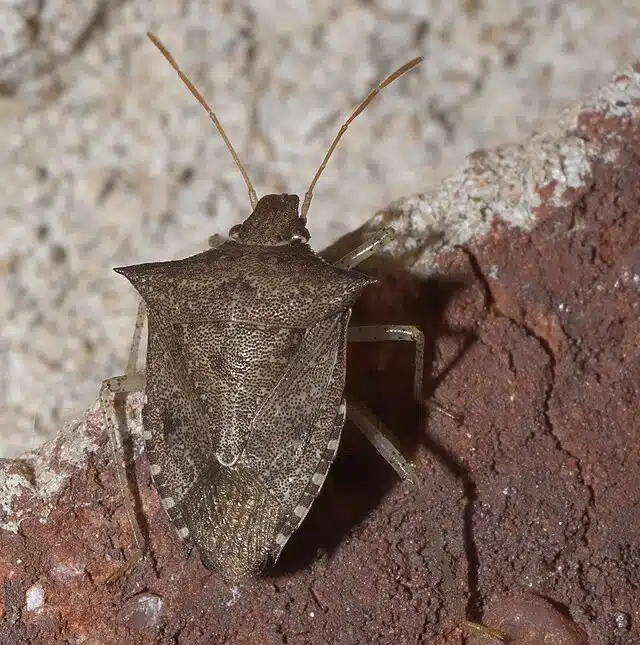
Dusky Stink Bugs (Euschistus tristigmus) are known for their dark brown color. These bugs have a shield shape and they represent a resilient species that survive winters, mainly by hiding under leaves.
The species can be recognized by its very small head about the size of the thorax.
Further species identification characteristics include short white bands that run parallel across its body.
The species begins to be active in May and it can be seen through the year until October.
11. Southern Green Stink Bug
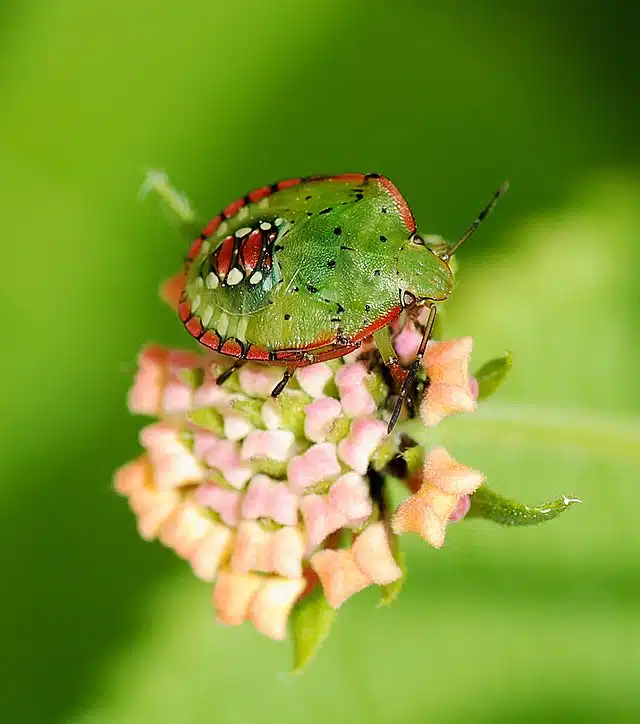
The Southern Green Stink Bug (Nezara viridula) is believed to originate in Ethiopia. It’s one of the largest green Stink buses routinely growing up to 13mm.
This species has specific adaptations that allow it to suck fruit and vegetable juice as well as to insert saliva into fruits.
While generally not problematic, it because a reason of concern when it’s present in high numbers in agricultural fields.
When more than a few thousand Southern Green Stink bugs make their way into a crop they can downgrade fruits and vegetables from a perfect status rapidly causing economic losses for farmers.
12. Elf Shoe Stink Bug
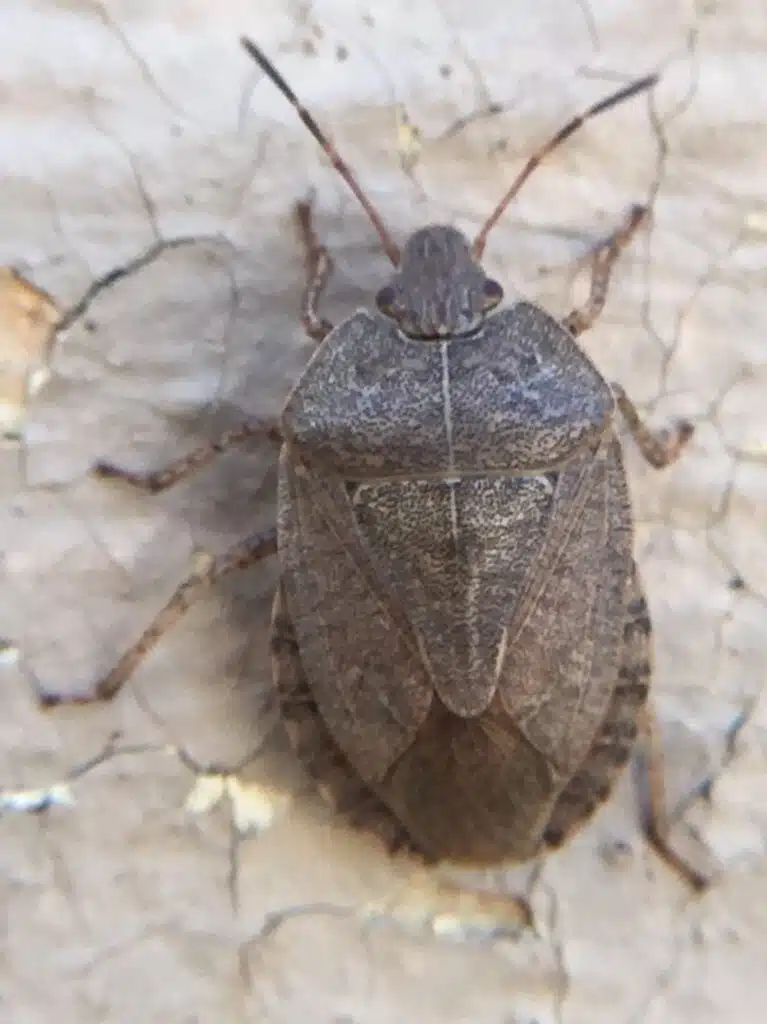
Found in North America, this species (Menecles insertus) is known for its thumbnail size.
The Elf Shoe Stink Bug might be smaller than the Southern Green Stink Bug but it can also release the same defensive odors.
This species is known for its brown-gray body. It features brown markings and it also shows a larger brown spot towards the tips of its wings.
13. Florida Predatory Stink Bug
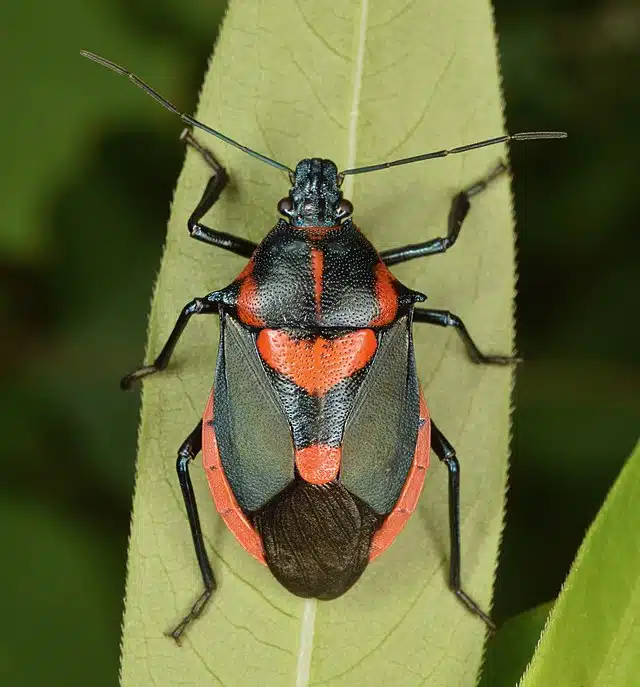
This species (Euthyrhynchus floridanus) has black and orange coloring. It’s a large species of Stink bugs as it grows up to 12mm.
The species changes colors from black-red as a nymph to black-orange as an adult.
As its name suggests, the species is mostly found in Florida and other Southern states.
It’s seen as a beneficial species as it feeds on invasive insects such as caterpillars and beetle.
However, Florida Predatory Stink Bugs don’t play a major role in controlling pests in Florida.
The species is known to lay eggs in clusters. It lays tens of eggs at a time which are identified by a spherical shape and a shiny brown color.
14. Green Burgundy Stink Bug
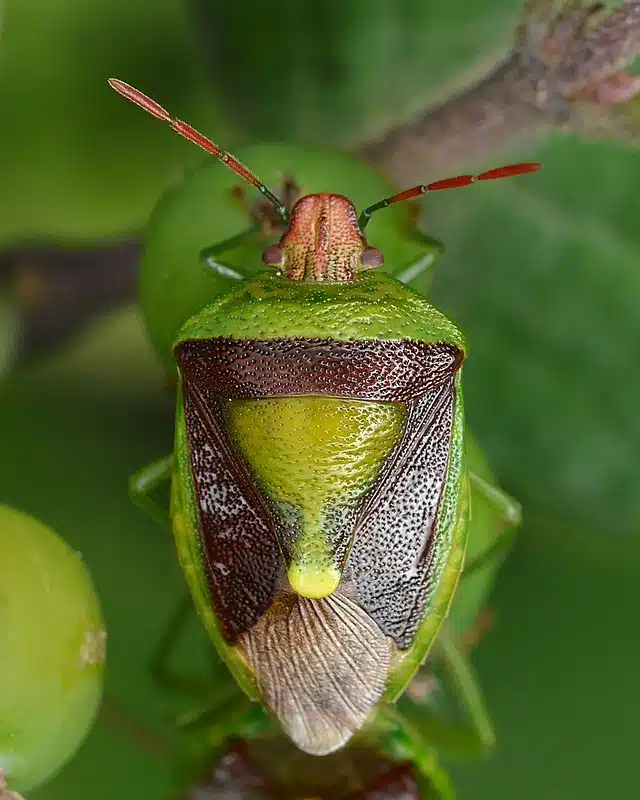
The Green Burgundy Stink Bug (Banasa dimidiata) is one of the species of Stink bugs that only appear late in the season. These bugs are first seen in June with a flight season that extends to October.
The Green Burgundy Stink Bug is common in the US. It’s one of the bugs of the species not feature short parallel bright lines along its edges.
Instead, this bug has a shield-like green body with a triangular burgundy-maroon marking on its wings.
The Green Burgundy Stink bug is also one of the Stink bugs with a colored head. Its head is also burgundy and not green.
15. Black Stink Bug
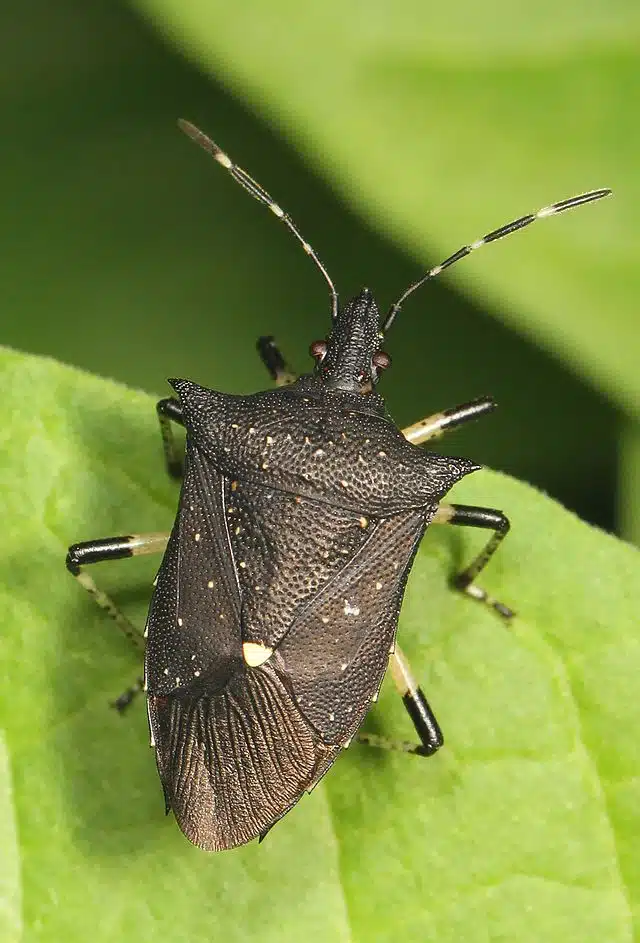
Black Stink Bugs (Proxys punctulatus) are known for a distinct black body with white spots and off-white legs.
These bugs are common in the US and they’re among the Stink bugs with a short lifespan.
The Black Stink bug appears late in the season. It first makes its appearance in woodlands and agricultural fields in June.
A short lifespan means this bug mostly lives up to 54 days.
This short lifespan makes the species a reduced threat to crops. Still, the Black Stink Bug is known for feeding on citrus and soybean fruits.
16. Mormidea lugens
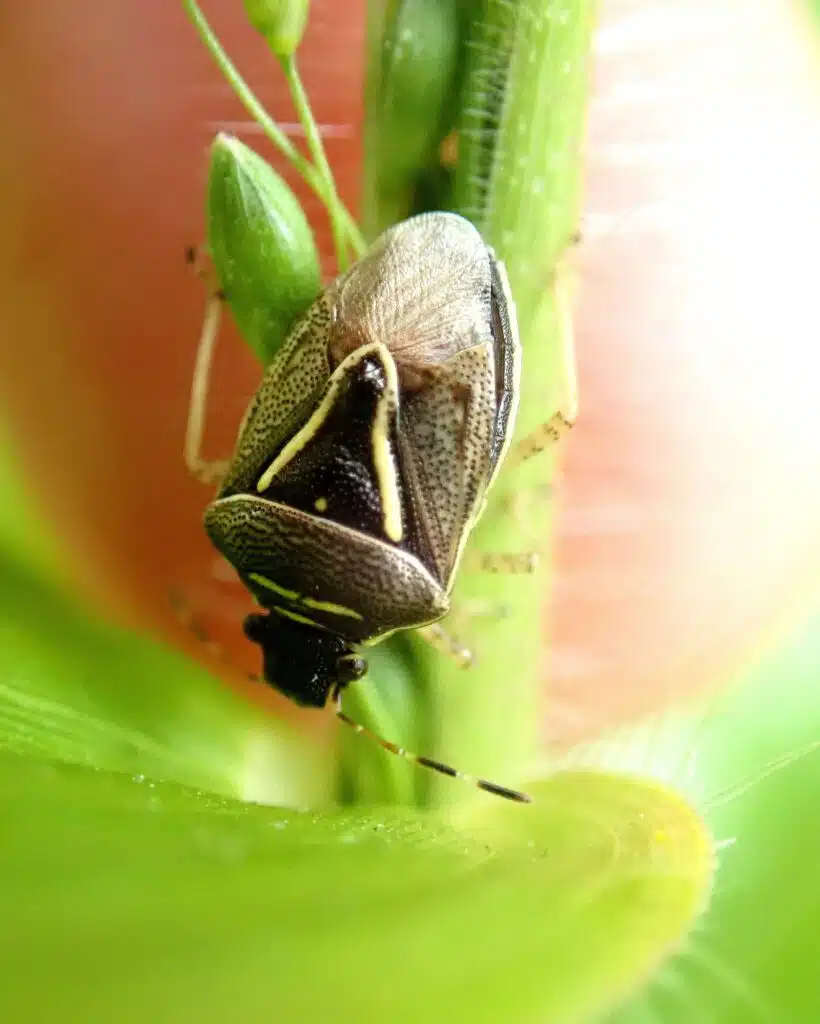
With a longer lifespan, Mormidea Lugens are one of the Stink bugs that remain active until November.
The species is common in the Caribbean as well as around the US.
Bugs of the species are identified by a golden-brown color and a shiny body that makes them stand out on the grass.
These bugs have a dark head that has color separation from the rest of the shield-shaped body.
A distinct V-shape yellow marking is also visible both on the wings of the male and of the female bug.
17. Conchuela Bug
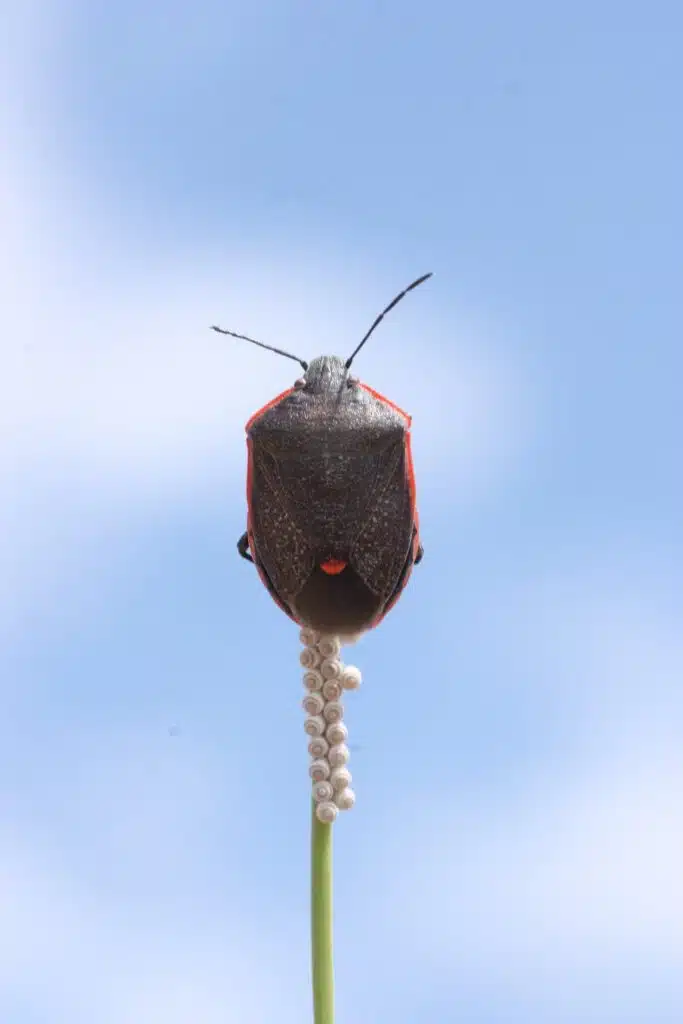
The Conchuela Bug (Chlorochroa ligata) is found in 2 main color variations. It’s seen in light green in Northern habitats and dark olive-green in Southern habitats.
The bug found in Southern areas is also known for exhibiting a bright yellow band that runs along the edges of its body.
Both versions of the species are large and can grow up to 19mm.
These bugs are known for feeding both on fruits and vegetables.
They are common on cotton, alfalfa, and cornfields.
18. Four-humped Stink Bug

Part of the Pentatomidae family, the Four-humped Stink Bug (Brochymena quadripustulata) is known for its grey body that resembles tree bark
Common in the Northern states, the bug grows at an average size of 14mm.
This bug exclusively feeds on vegetable flowers and juices. It has been shown to regularly visit 18 species of flowers.
19. Bagrada Bug
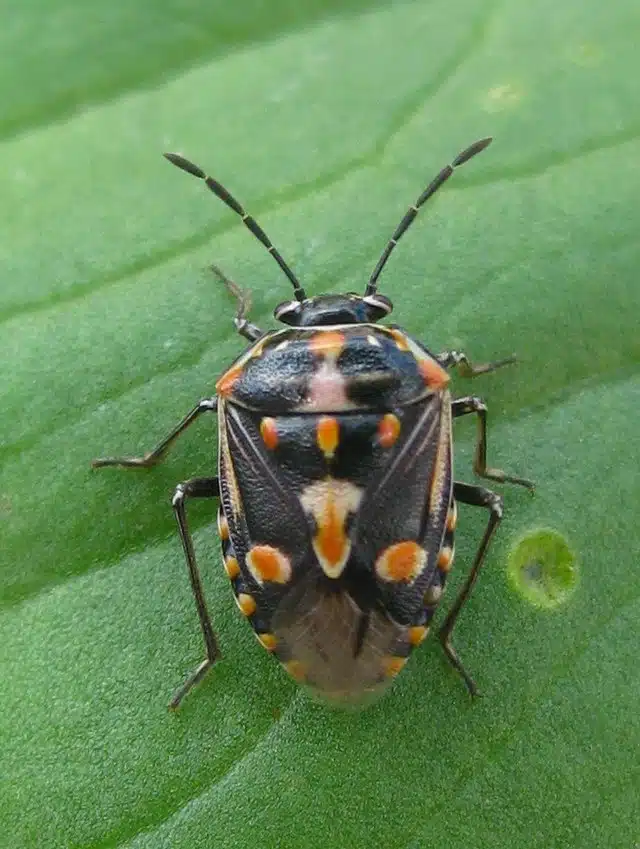
Bagrada Bugs (Bagrada hilaris) are found in California, Utah, Nevada, and Arizona. The species has migrated to the US from tropical habitats.
These bugs are identified by a black body with red or orange markings.
They are known to live off cabbages and other vegetables.
Bagrada female bugs are larger than Bagrade male bugs and they reach up to 7mm in body length.
These bugs are seen as invasive species in crops. One of the only true management methods includes detecting possible invasions quickly to remove the bugs from crops by hand.
20. Anchor Stink Bug
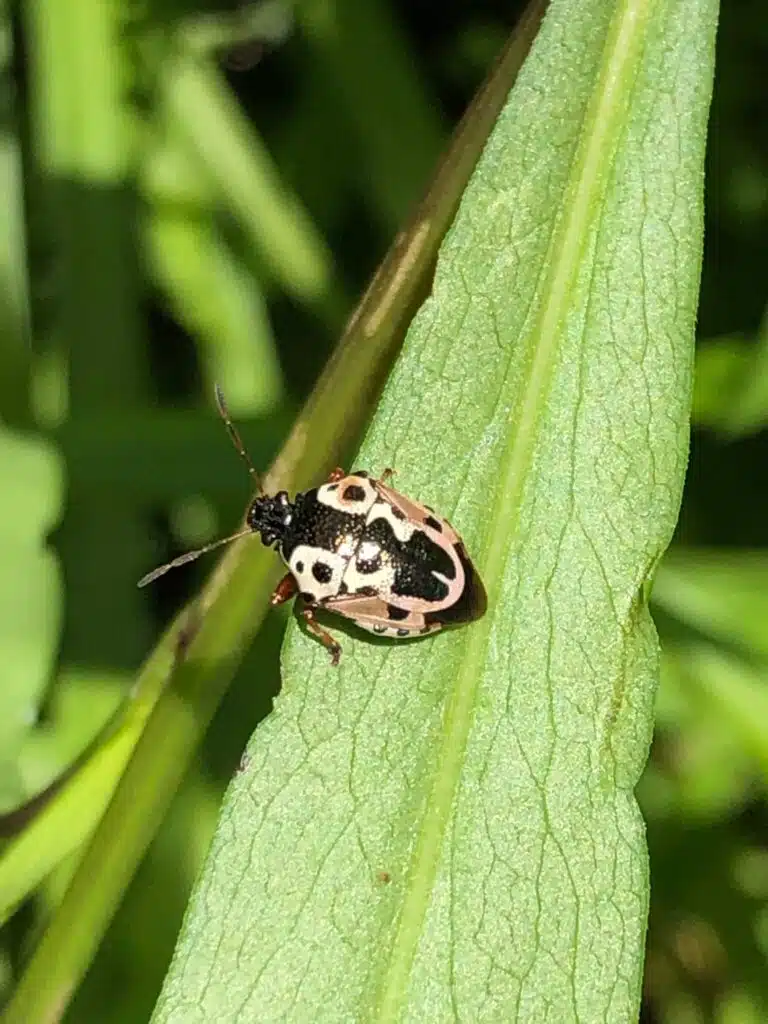
Anchor Stink Bugs (Stiretrus anchorago) are known for a more rounded body shape compared to other species found in the US.
The species is known for feeding on varied insects found either on flowers or on vegetables.
Anchor Stink bugs exclusively feed on cabbage loopers, Mexican bean beetle, and soybean loopers.
21. Brochymena arborea
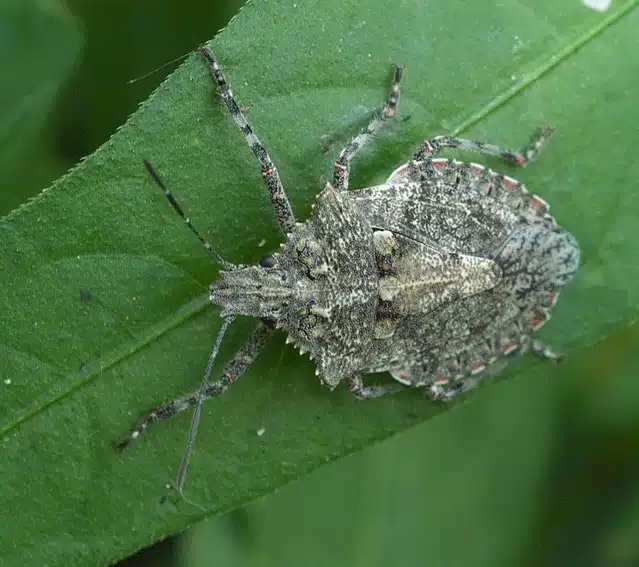
This species is a type of predatory Stink bug family. It possesses a camouflage-like body resembling tree bark.
These bugs are common in decorative trees and fruit trees. It’s here that they prey on certain types of insects.
Beetles and caterpillars are among the preferred Brochymena arborea prey.
Another distinct trait of these tree-linked Stink bugs is the amount of stink they can use to prevent predation. This is based on enlarged stink glands.
22. Say’s Stink Bug
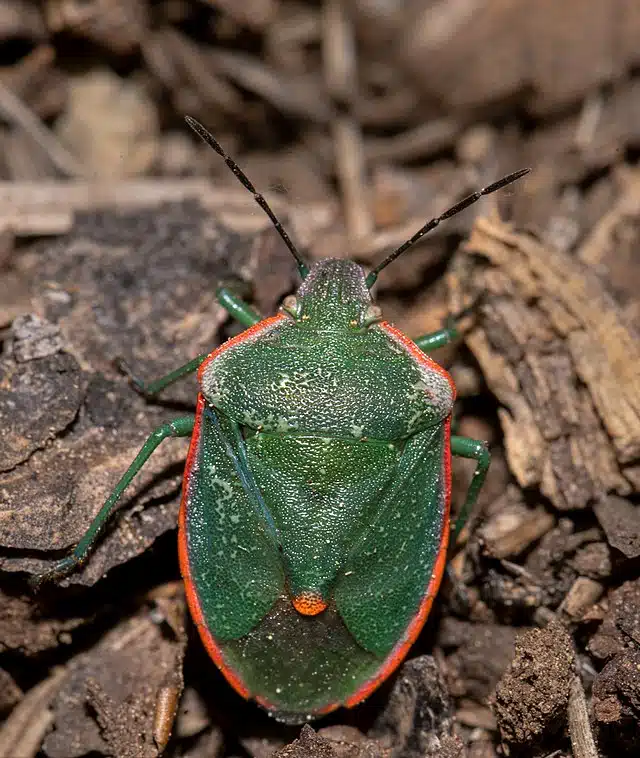
Say’s Stink Bugs (Chlorochroa sayi) are common in the US. The bugs are known for an almost all-green body with a faint yellow line running along the edges of their wings.
They are known to feed on a wide variety of fruits. Preferred methods of fruit consumption include sucking out their juices.
This is the main reason Say’s Stink Bug is sugar beets and fruits. These bugs are also seen as major pests of tomato crops across California.
Like many other stink bugs, the species doesn’t only resort to drinking fruit juices as it also inserts infectious yeasts into the fruits.
23. Ascra bifida
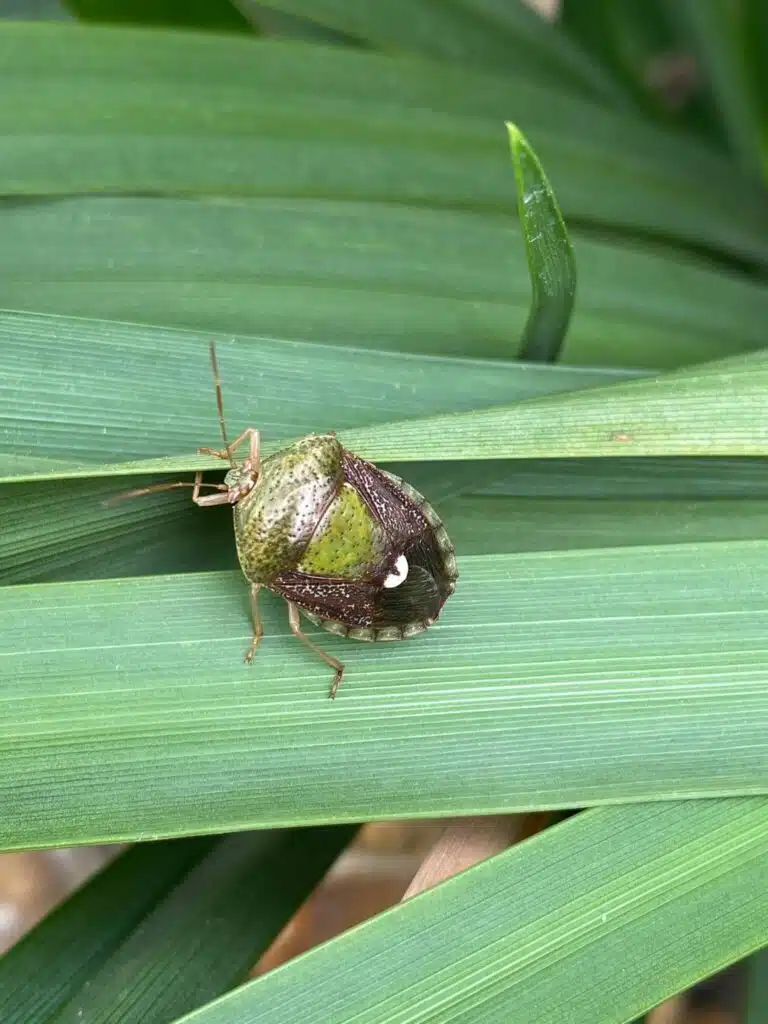
Ascra Bifida is a type of bicolored Stink bug. The species is known for having a light brown head and a dark brown body. It also features a small yellow V-shape on the abdomen.
These bugs are known to grow slightly above the average size of a Stink bug up to 15mm. The species is rather new with insufficient scientific data on its habits.
At the moment, Ascra bifida is only known to feed on 7 types of flowering plants.
24. Banasa calva
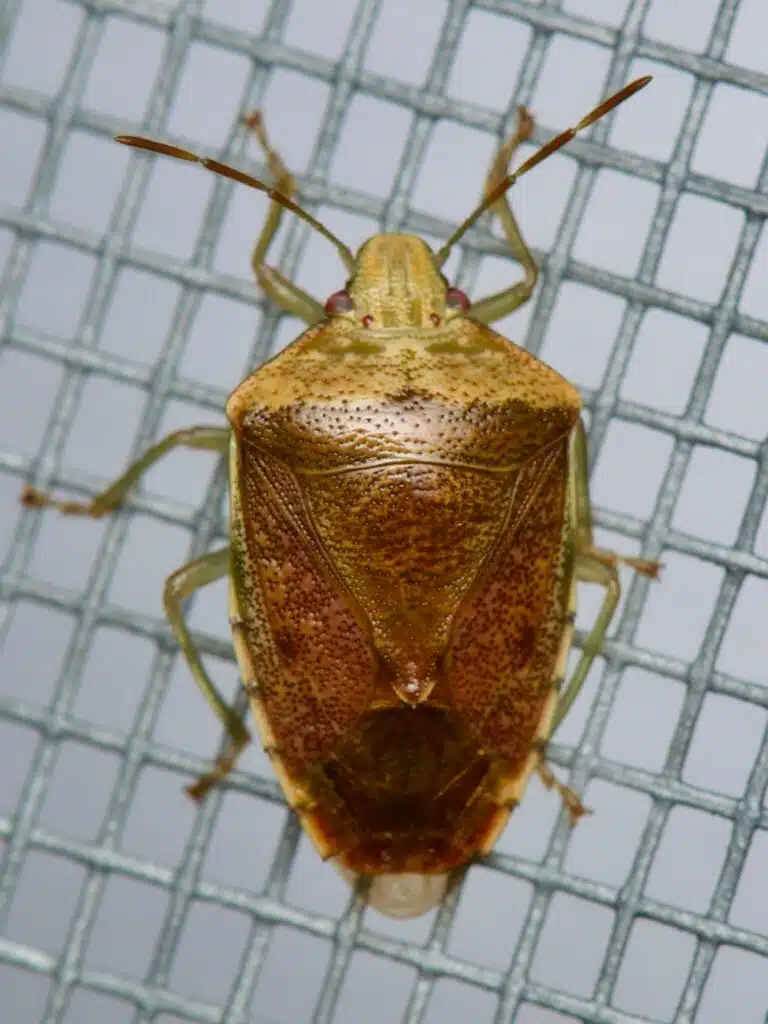
Part of the Banasa genus, Bansa calva is a type of Stink bug found both in North America and South America.
There are 18 species of Banasa Stink buts. The Banasa calva species is known for its multi-color body.
These bugs are mostly green but they have long brown stripes across the wings and on the shoulders of the shield-like body.
These Stink bugs are known for having a small green head and all-green legs.
25. Spined Green Stink Bug
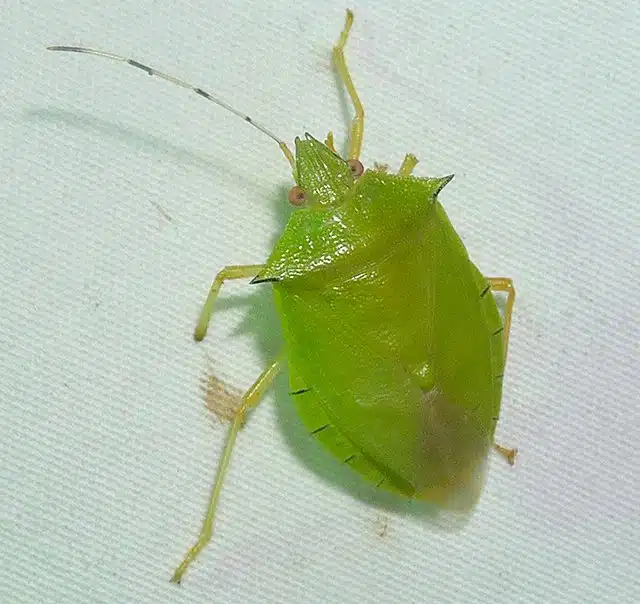
The Spined Green Stink Bug (Loxa flavicollis) is mostly recognized by its green body with small dotted white marks. It has a small triangular green head.
The legs of these bugs are yellow-green, as are the markings that run along its body.
These bugs are known to solely feed on plants. They aren’t considered a serious pest to any type of home or crop as they don’t live in colonies favoring solitary living.
26. Giant Strong-nosed Stink Bug
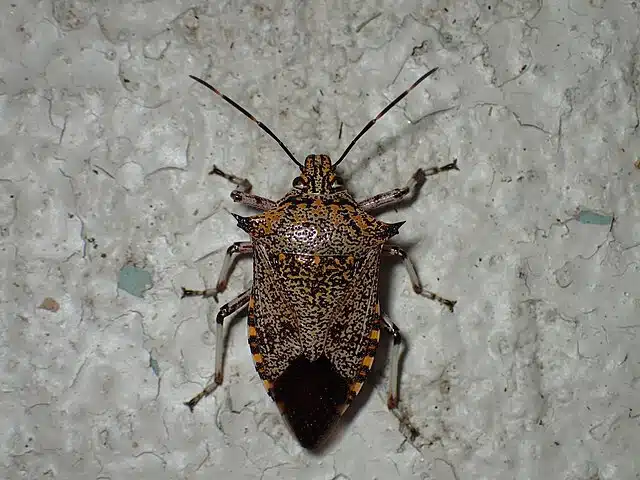
The Giant Strong-nosed Stink Bug (Alcaeorrhynchus grandis) gets its name from its long body. It can measure up to 20mm in adulthood.
This species is largely unknown in some parts of the country but common in states such as Florida, especially among eggplant crops.
These bugs feed both on eggplant and soybean but they are also present in these crops looking for caterpillars.
Identification is based on a large brown body with a black triangular mark on its lower abdomen.
27. Euschistus obscurus
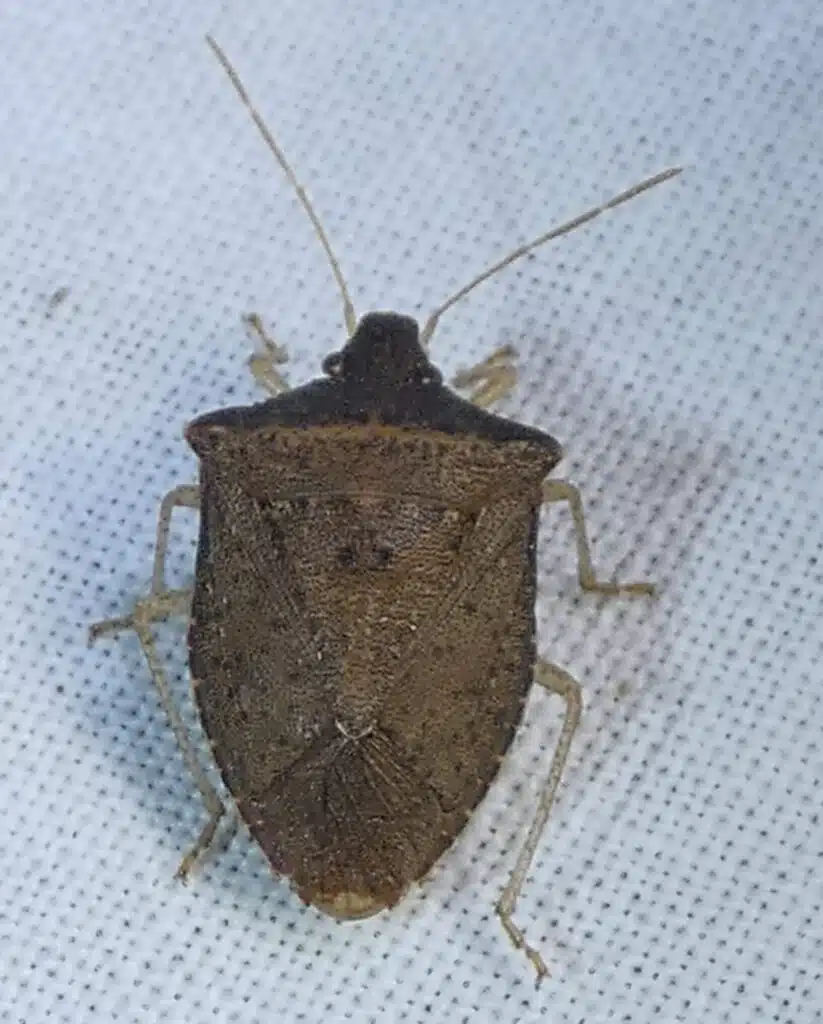
This Stink bug species lives in South America, Central America, and Southern parts of the US. It has a high presence in the floral fields of Florida.
The genus can be identified by a brown to dark brown body with black and grey marks and a shield-like body shape.
Its entire body and its head are of the same brown coloring. Its antennae and legs are of a lighter brown shade.
These bugs are known to solely feed on crops and fruits.
28. Two-spotted Stink Bug
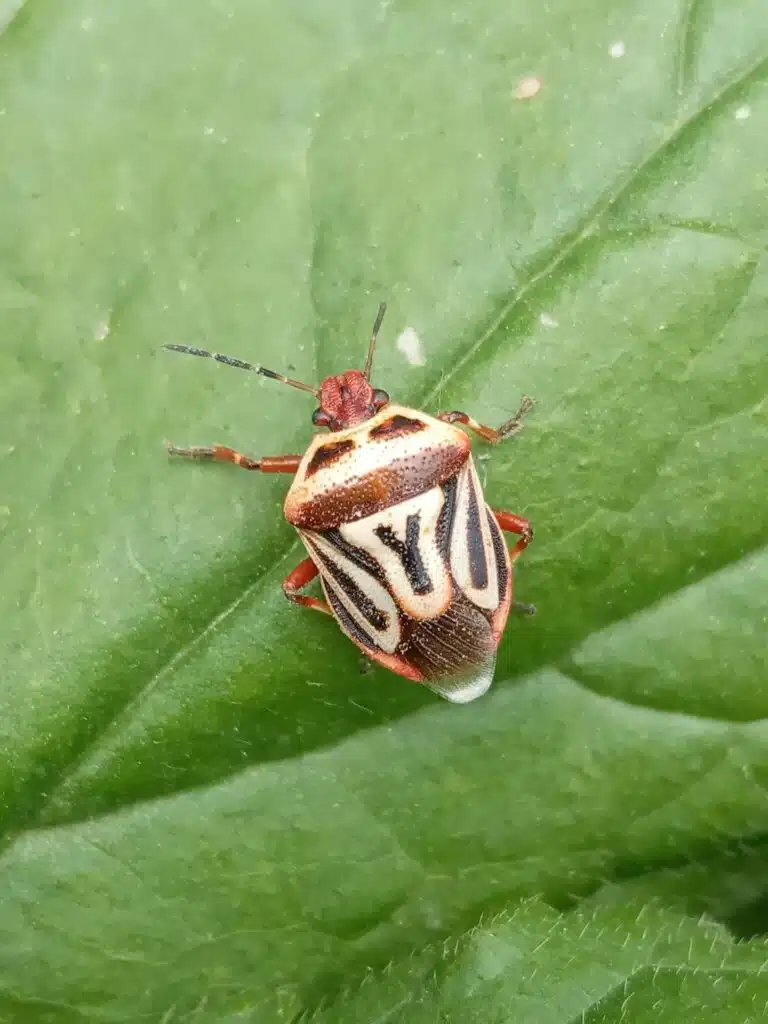
These Stink Bugs (Perillus bioculatus) have a long beak used against common prey such as insects. They pierce insects to suck liquids that serve as food.
The genus is known for the Keyhole Stink bug because it has a red keyhole-shape marking on its body.
It also has 2 black spots on its upper body which determine its name.
The combination of black and red coloring is rare in adult Stink bugs as most other bugs of the genus only come in these colors as nymphs.
As most Stink bugs eat insects, Two-spotted Stink bugs are rather beneficial for crops in controlling common pests.
29. Hedge Nettle Stink Bug
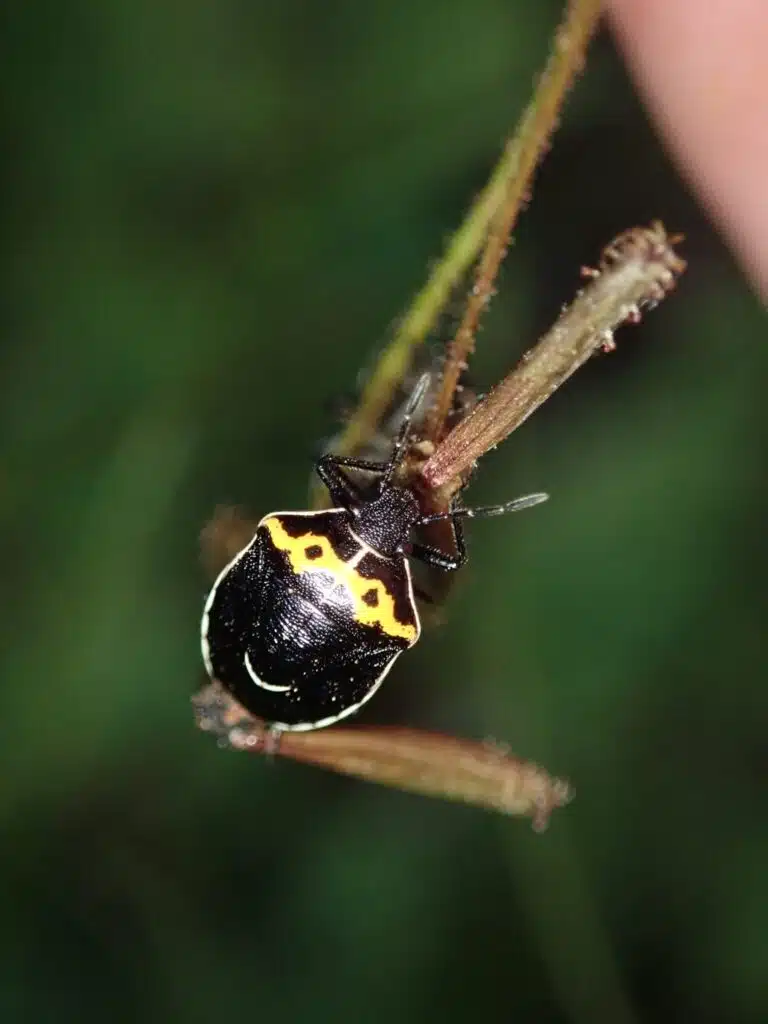
Hedge Nettle Stink Bugs (Cosmopepla conspicillaris) are also known as Two-spotted Stink bugs, but not to be confused with Perillus bioculatus genus.
These bugs are black and orange with two black spots on the body.
A high preference for Stachys plants is tied to the Hedge Nettle Stink Bug. Shaped similarly to a shield with a pointed scutellum, Hedge Nettle Stink bugs.
The species has no pest status. It isn’t linked to any environmental benefits either.
30. Dendrocoris humeralis
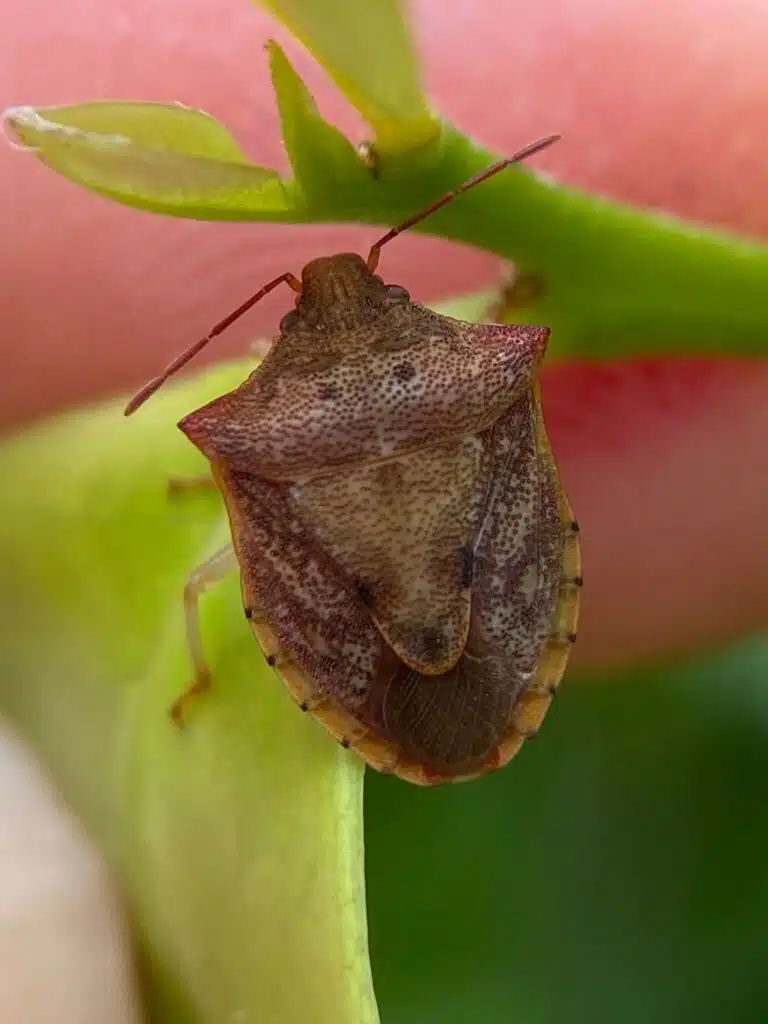
This species is often confused with the Two-spotted Stink bug for its red keyhole-like shaped marking on its body.
The bugs also have 2 black spots on the upper thorax next to the small blackhead.
Dendrocoris humeralis is a North American native species.
It mostly consumes beetle and beetle larvae. These bugs have a potentially-beneficial role as they eat the larvae of the common Colorado potato beetle.
Further Reading: